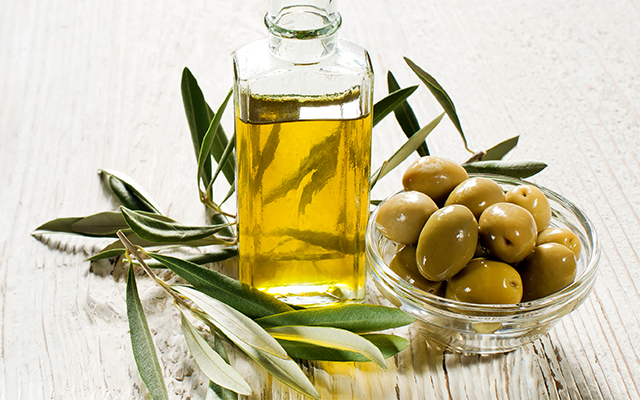“LOSE FAT WITH FAT!” Yes, it sounds like yet another dubious infomercial promise. But a growing number of American dieters who take nutritional supplements containing the fatty acid CLA (conjugated linoleic acid) believe this latest weight-loss trend has real substance. They have found that, when used in conjunction with a regimented plan of diet and exercise, CLA not only reduces body fat but also increases muscle strength and exercise endurance. Now science has stepped in to explore CLA’s too-good-to-be-true health claims — and CLA has stood up to the skeptics.
What Is CLA?
CLA is related to the omega-6 fatty acids, one of the two types of essential fatty acids that help the body increase metabolic rates, boost the immune system and keep cholesterol levels in check. CLA is found in dairy and animal fats, such as beef, lamb, whole milk, and eggs, but cannot be produced by the human body.
Interest in CLA began in the late 1980s when Michael W. Pariza, a professor in the Department of Food Microbiology and Toxicology at the University of Wisconsin, Madison, discovered an isolated agent in fried hamburger that reduced the incidence of cancer in mice. A few years later his team unmasked the mystery element: a chemical form of linoleic acid they called conjugated linoleic acid, or CLA.
CLA reduced body fat and preserved muscle tissue in overweight or obese people who did not change their diet.
This discovery set off a slew of studies. While these studies examined different variables and came up with varying conclusions, the one consistent finding was that CLA helps people lose body fat. Among the research most cited is a Norwegian study published in The Journal of Nutrition in 2000. It found that CLA reduced body fat and preserved muscle tissue in overweight or obese people who did not change their diet. According to the research project manager, individuals in the CLA group lost six more pounds of body fat, on average, compared to those in the placebo group.
Another study in The Journal of Internal Medicine Research said that CLA reduced body fat in healthy exercising humans of normal body weight. Research in the International Journal of Obesity showed that CLA reduced abdominal fat in obese men, and Louisiana State University scientists showed up to an 88 percent reduction in the body fat of male mice who were fed CLA over a period of six weeks.
What Does CLA Do?
CLA reduces body fat by increasing basal metabolic rates. In other words, it helps the body convert food more efficiently into energy. CLA doesn’t decrease overall body weight; rather, as Pariza told the American Chemical Society, “it keeps a little fat cell from getting bigger.” This can alter the body’s fat-to-muscle ratio. In one study, Pariza found that those who stopped dieting and did not take CLA eventually put weight back on in a typical manner – about 75 percent fat to 25 percent muscle. Participants who stopped dieting, but kept taking CLA, also gained weight, but at a 50-50 fat-to-muscle ratio.
CLA’s purported benefits extend well beyond a more slender waist. Further studies suggest that in addition to increasing muscle strength and exercise endurance, CLA can have an impact on specific diseases and ailments. Dr. Delbert Dorscheid, a cancer and asthma researcher on the faculty in Pulmonary and Critical Care Medicine at the University of Chicago, reviewed more than 200 published research and clinical studies worldwide on CLA’s health benefits. Among the findings was that women with increased levels of CLA in their body tissue have lower breast-cancer rates. Similar findings have been reported for colon and prostate cancer. And the health benefits don’t stop there: CLA has been linked to improved immune system function, as well as a decrease in cardiovascular disease, type 2 diabetes, osteoporosis and even allergies.
Pariza is careful to point out that CLA research is still in its infant stage. “Some of these findings are better documented than others,” he says. “CLA has a potent inhibitory effect on body-fat accumulation, but its effects on muscle are not conclusive. In animal models CLA reduces some but not all forms of cancer; dietary CLA is particularly effective in inhibiting breast cancer in rodents. However, some things, such as how it affects diabetes, have not been proven.”
Even if CLA doesn’t turn out to be a miracle cure for cancer, odds are that it will continue to be a very popular dietary supplement.
Even if CLA doesn’t turn out to be a miracle cure for cancer, odds are that it will continue to be a very popular dietary supplement. According to the Centers for Disease Control and Prevention, close to three out of four American adults are either overweight or obese. And it’s a good bet that many of those people will embrace dietary supplements that help them battle the bulge.
CLA Benefits
Can CLA help you? It might, if you know how to use it. Most of the studies conclude that a person needs to take 3.4 grams of CLA (3,400 mg) daily to receive its benefits. (The amounts used in many of the studies were two to three times higher, but the treatment period was only 12 weeks.) And where you get those 3.4 grams is up for debate. According to Peter W. Parodi, a food scientist with the Dairy Research and Development Corporation in Victoria, Australia, of all the CLA found in food, “milk fat is the richest source of CLA.” But in low-fat crazed America the consumption of red meat and dairy products has dropped dramatically. Studies at the University of Wisconsin indicate that CLA dietary consumption may have dropped as much as 80 percent in the last two decades.
But even if you resolve to gulp down several glasses of whole milk each day, you probably won’t be getting enough CLA. Changes in livestock feeding practices over the last 50 years have largely removed naturally occurring CLA from our diet. Larry D. Satter, Ph.D., an agricultural research dairy scientist at the U.S. Dairy Forage Research Center in Madison, Wis., recently conducted a study comparing the amount of CLA in milk from cows grazing on pasture to the amount from cows fed hay or silage – the fermented feedstuff stored in silos. Satter found that pasture-grazing cows had 500 percent more CLA in their milk than those fed silage. According to Satter, “This is true even when the non-grazers eat pasture grass conserved as hay.” CLA levels in pasture-raised beef have also been found to be higher than those in the meats of grain-fed cattle.
How to Take CLA
The good news is that the days of CLA-light milk may be numbered. University of Alberta, Canada, researchers have announced that they are working to develop milk that contains higher levels of CLA by adding oils, such as canola, safflower, linseed or flaxseed to the animals’ diet. There is a patent pending on the formulation.
Until then Pariza says that supplements are the healthiest way to get CLA because they are manufactured to contain a specific balance of biologically active CLA isomers (chemical compounds). “In foods where CLA occurs naturally, like beef and dairy, the CLA is associated with the fat. To get sufficient CLA you would have to eat a lot of fat.”
Are all CLA supplements the same? Not really. Each brand usually has different amounts of active CLA. Since the various formulas contain a percentage of other oils as ingredients, you need to calculate how much each supplement is delivering to make sure you’re getting your full 3.4 grams. If a capsule contains 75 percent CLA, and it’s 1,000 mg, you are receiving 750 mg of CLA, and you need five per day to reach the recommended 3.4 grams. The most common type of CLA used in research is a patented formulation called Tonalin. Tonalin can be found in a number of brands, such as Natrol, Jarrow Formulas and Nature’s Way.
Many people have found it best to take CLA supplements before or with meals. Side effects are rare but may include nausea or upset stomach. These can be reduced, though, when the supplements are taken with protein, such as low-fat milk. People who report side effects say they usually subside after about two weeks. To date, there appear to be no health risks or serious side affects associated with CLA supplementation.
It’s important to keep in mind, though, that CLA is not a magic drug. It will not make up for poor eating habits or lack of exercise.
It’s important to keep in mind, though, that CLA is not a magic drug. It will not make up for poor eating habits or lack of exercise. “I think it’s something that can help [with weight loss], but certainly there are no miracles,” Pariza says. He believes, however, that CLA provides an important psychological benefit while dieting. In his research, Pariza noticed that participants who took CLA repeatedly commented that they felt markedly better than those who received a placebo. “Basically, it was associated with reducing the stress of a weight-loss diet,” he says. “CLA can be helpful to people who are dieting in part because the improved results make it easier for them to stick with the diet.”
This article has been updated. It was originally published in the Jan./Feb. 2003 issue of Experience Life.




This Post Has 0 Comments